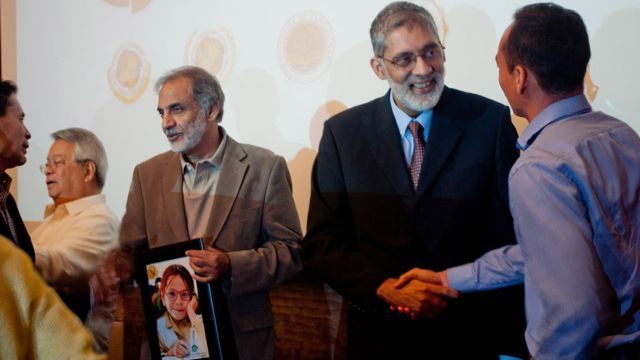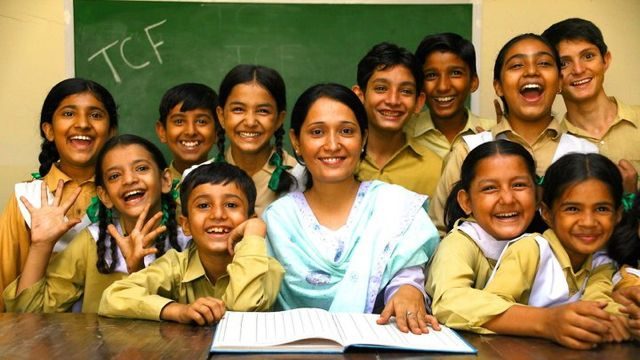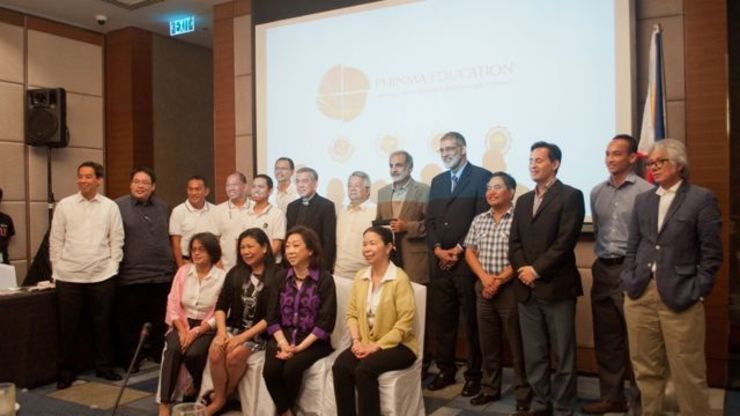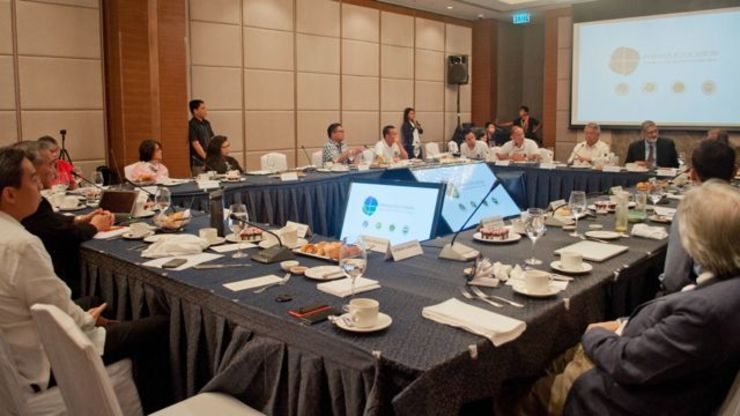SUMMARY
This is AI generated summarization, which may have errors. For context, always refer to the full article.

MANILA, Philippines – When they saw children rush to sell flowers and offer to wipe car windshields on the streets of Pakistan, several businessmen in Pakistan were struck by an idea: these children – and there were millions like them – should be in school.
They also discovered that there were large open pieces of land within Karachi that was home to many people, but which had no nearby schools.
They decided that they had to intervene in public education and use their managerial expertise to create a system that works and is sustainable.
So using their own money, these business leaders founded The Citizens Foundation (TCF) in 1995 and built 5 schools.
“Our motto was to get the children off the street and into schools. Our principal target was to go to areas where there is no government schooling,” TCF director Ateed Riaz said at a discussion with Philippine businessmen and journalists organized by Phinma Education on Thursday, August 28.
In 2002, the group built 100 schools; by 2008, 500 schools had been built. Finally, TCF reached its goal of 1000 schools by April 2014. They have kept over 145,000 children off the streets.
This month, TCF is receiving the Ramon Magsaysay Award, Asia’s equivalent of the Nobel Prize. It is being honored for putting up much-needed schools across Pakistan and getting girls to go to class.
Pointing out that lack of access to education undermines efforts to fight poverty, the groups said it is crucial that both government and the private sector work together to overhaul the education system.
Education emergency
There is an education emergency in Pakistan, said TCF chief executive officer Syed Asaad Ayub Ahmad.
Ahmad said that public spending on education comprises only 2.1% of Pakistan’s gross domestic product. The country has 5.5 million children who are out of school, the second highest in the world after Nigeria. Two out of three out-of-school youth are girls.
Ahmad said TCF is committed to bringing the schools to the students instead of the other way around. They are looking for plots of land right in the heart of the neighborhood, so children can simply walk to attend classes.
The foundation gained the communities’ trust, which was vital for them to encourage parents to send their daughters to school.
Social norms in Pakistan discourage education for women, with the idea that women should remain in the domestic sphere.
The brutal shooting of Pakistani schoolgirl Malala Yousafzai in 2012 by religious extremists shocked the world and turned the spotlight on the state of women’s education in the country.
But Riaz said many areas in Pakistan are progressive, with the parents themselves asking them to build schools for their daughters.
TCF strives to maintain a 50-50 gender ratio in their classrooms. Principals are encouraged to go out to the community and get as many girls as they can into the school.

Subsidizing students, helping teachers
Ahmad also said that hiring an all-female faculty made families comfortable to send their girls to school. The group also provided transport services for the teachers, who often had to endure hour-long commutes to reach school.
To keep children in school, TCF subsidizes most of the fees, which are calculated based on the family’s capacity to pay.
The average cost per child to TCF is approximately $11. A pay-what-you-can-afford fee structure is in place, with families paying at least a minimum fee of Rs. 10 ($0.10) per child per month, going up to Rs. 375 ($3.75).
“We try not to take more than 5% of the household income as the schooling cost of any family,” Riaz said. “It should hurt, but just a little bit, just for the family to understand that their children’s education is an important part of their lives and so they must work for it.”
TCF schools are funded by the organization’s individual and corporate donors, who trust the organization because of their managerial approach to education.
Because of the founders’ business backgrounds, Riaz said the group has strived to look for zero-cost solutions to their problems.
It has also embraced technology to better manage their school units. TCF uses online systems to track the progress of the students, train teachers extensively, track auditing process and performance metrics, and even donations.
Aside from building schools, TCF’s involvement with the communities has made it aware of other pressing concerns.
The group has also provided a four-month course to teach adults how to read, write and perform basic calculations.
Most of those who take up the course are parents of TCF students, who want to learn how to read and write to help their children with homework.
Riaz recounted how a 78-year-old woman thanked TCF for teaching her how to read and write.
“She said, ‘Sir, you have given me eyes. I was blind before. I went about life as a blind person,’” Riaz said.

Private initiatives in PH
Philippine business leaders shared their own efforts to improve the state of public education.
Luigi Bernas, a former investment banker and a trustee of non-profit organization Synergeia, said the national government is too preoccupied with the lack of textbooks, teachers, and classrooms.
“We’ve given up on the national education system. They’re too busy preoccupied with basic resource problems…. When do they get time to think about [students’] learning ability and achievement scores?” Bernas asked.
He said Synergeia decided to use a different approach: by working with the local school boards.
By going local allows for creative solutions to unique local problems, he said. In far-flung areas, for instance, getting to school is a significant barrier to education – something that may not be as evident in schools in the city.
Today, Synergeia is working with over 170 local government units. The challenge, Bernas said, was to ensure sustainability.
“The local school board changes every three years. Our goal is to have local school boards survive mayors,” he said.
For JJ Jimenez, vice chairman of the board of trustees of the De La Salle University, the goal is to make education more accessible by opening areas of learning to the poor and sharing expertise with other educational institutions.
He cited as possible solutions alternative learning programs to bring education to out of school youth, street children, and indigenous peoples.

Improving the technical vocation track in the Philippines also needs improvement, according to Jun Inocencio, superintendent of schools at Salesians of Don Bosco.
He said that the current curriculum from the education department does not place much emphasis on hands-on skills and immersion.
Inocencio said Don Bosco has introduced a curriculum composed of 70% skills training, so that graduates who do not intend to pursue further studies can readily find work to apply their skills.
Phinma Education Network president Chito Salazar emphasized how bringing together managerial thinking and business acumen can help bring costs down and make changes to the educational system more sustainable.
In discussing business-like approaches to solve education problems, Philippine Business for Social Progress executive director Rapa Lopa said it is also important to look for solutions that work with the current public education model.
“Even if the private sector is trying to make models to make education more accessible and affordable, we need to see how we can work within the current [education department] initiatives,” Lopa said.
“Much of the investments have gone into the public school system…but it did not allow for a solution to systemic problems that require a multi-faceted, multi-investment approach.” – Rappler.com
Add a comment
How does this make you feel?
There are no comments yet. Add your comment to start the conversation.